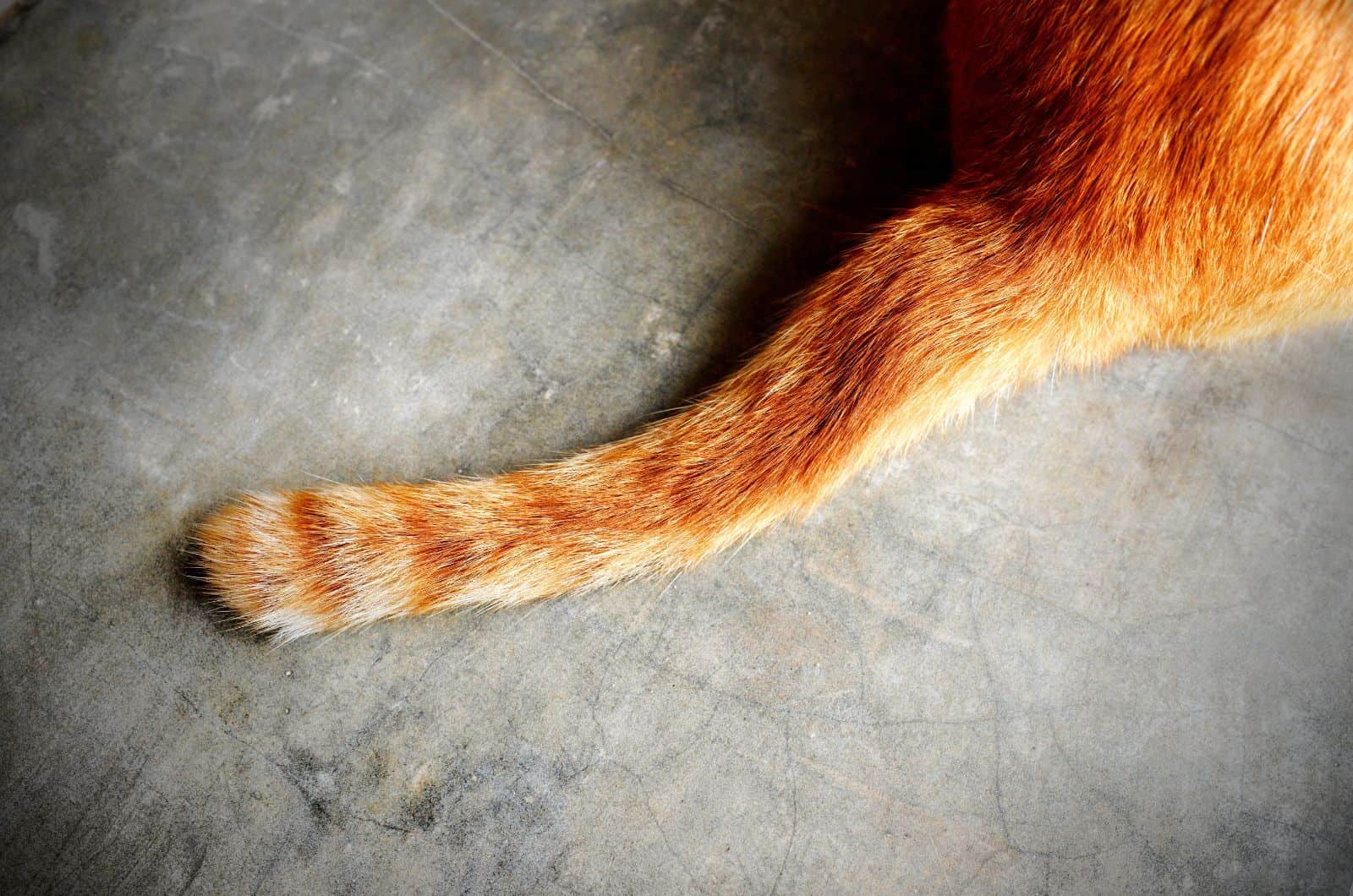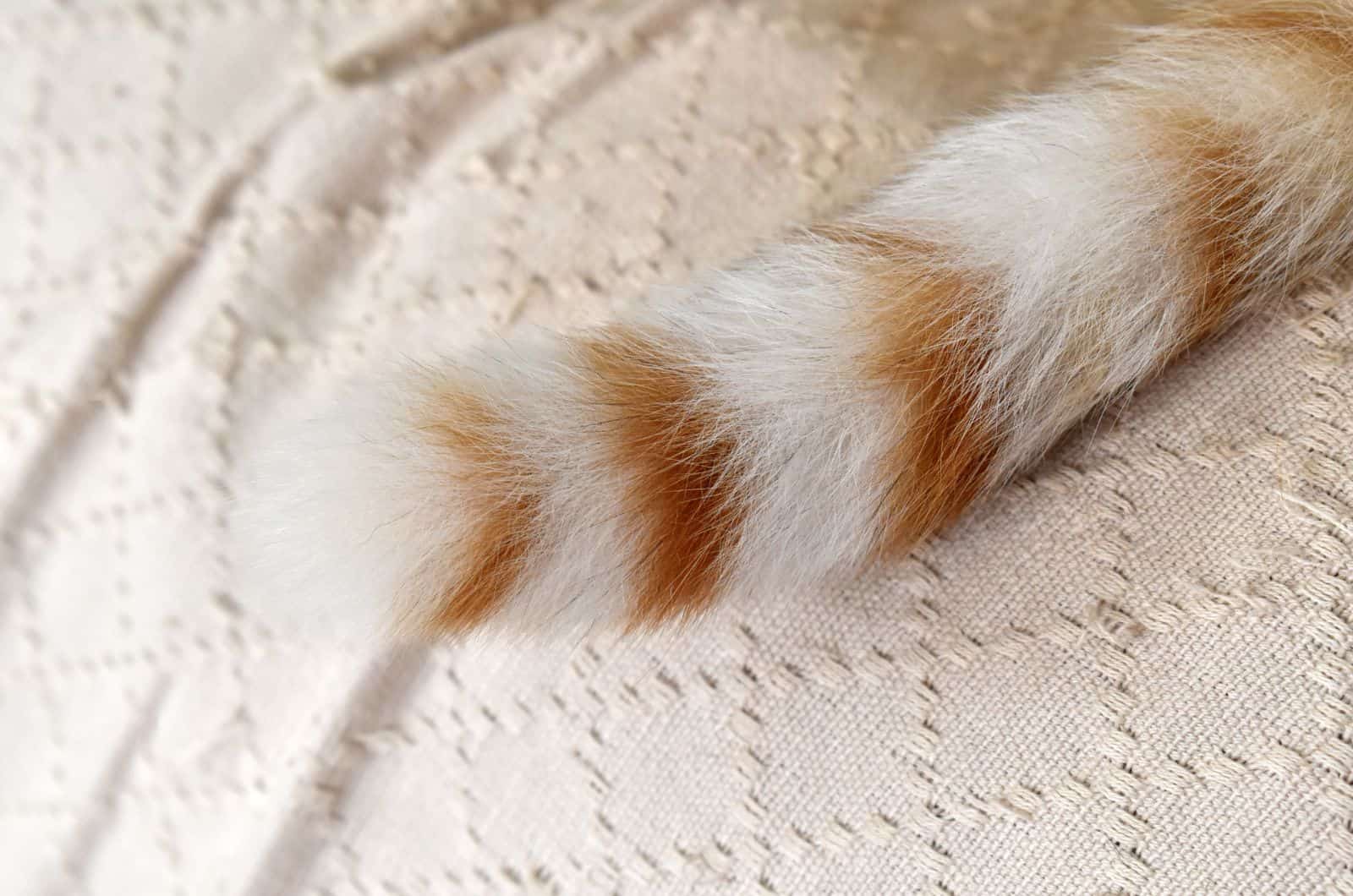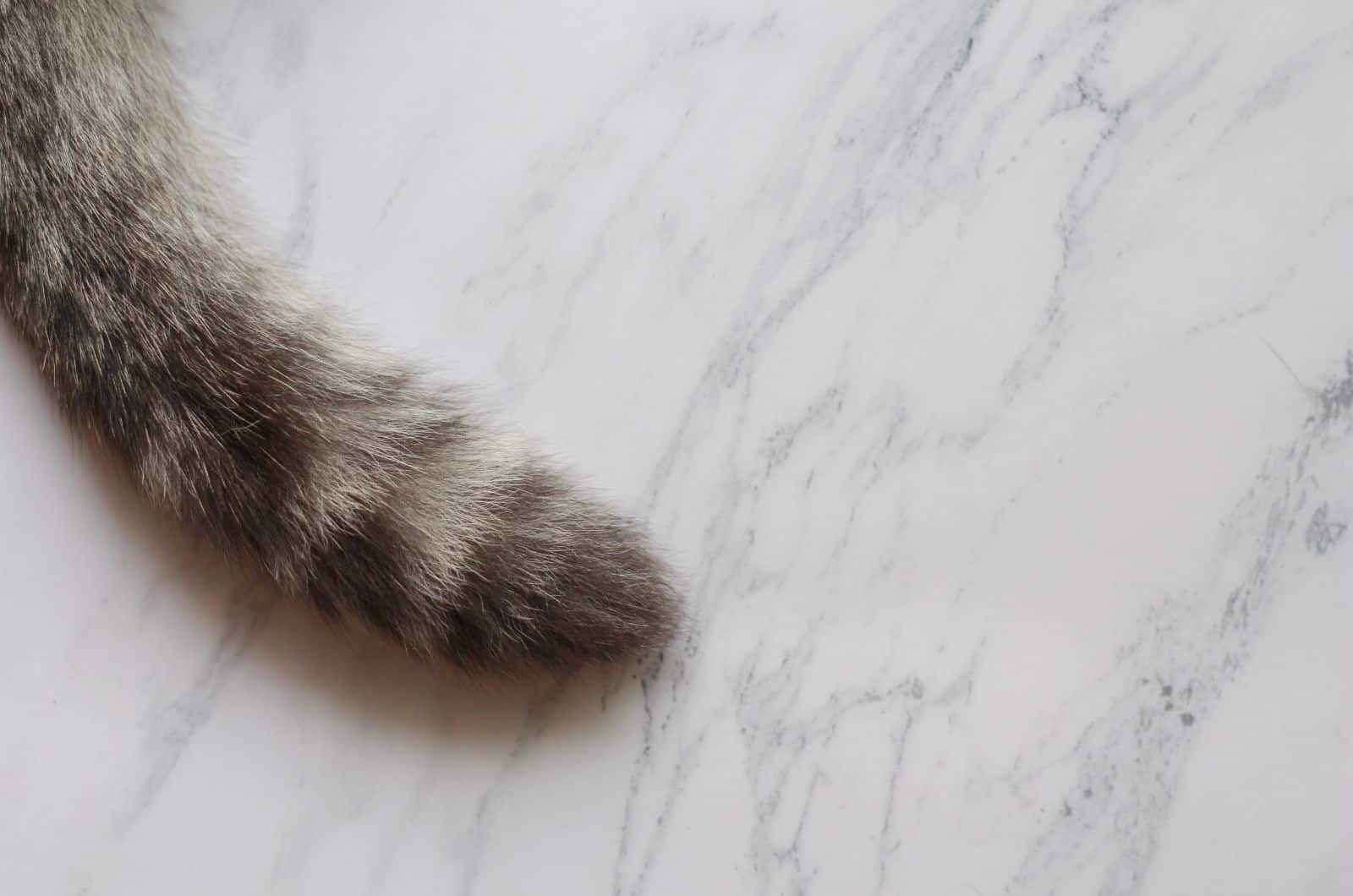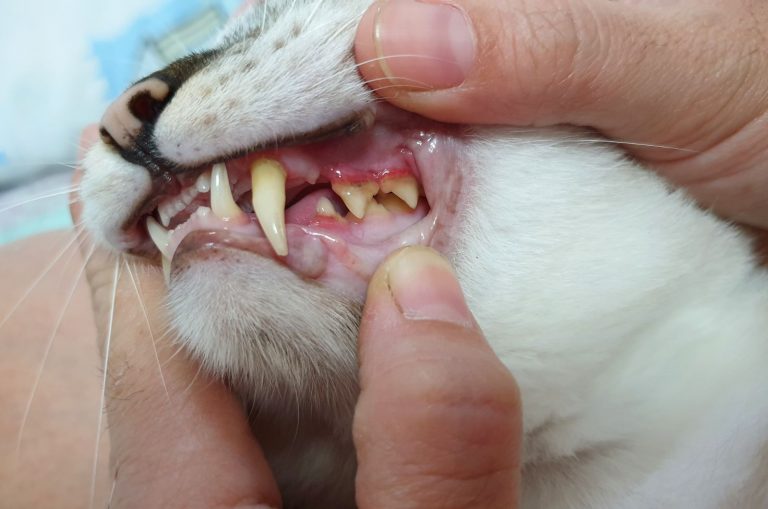Helping My Cat With Broken Tail – How To Treat It Properly?

No matter how skillful cats are, accidents will always happen. Cats do suffer from injuries and while they are famously lucky and tend to land on their feet, they may suffer breaks to their legs, toes, teeth, and even their tail.
Almost every cat owner knows that their cat’s tail is extremely important for their everyday life, so what happens if a cat breaks its tail? Is this serious or not? When should you worry?
A cat’s broken tail may range from a minor injury to a severe fracture, so each case requires special veterinary care. Explore this article and discover everything you need to know about cat tail injuries.
Has Your Cat Broken Its Tail?

If you’re a cat parent, then this article is for you, because you never know when something bad might happen, and it’s always a good thing to know how to deal with injuries.
The tail is a very important part of a cat’s body, mostly because it’s actually a continuation of their spine.
The tail is made up of around 22 coccygeal vertebrae; these are small rectangular-shaped tail bones that decrease in size as they get closer to the tip of the tail, and these are held together by ligaments.
The main reason why the cat’s tail is so important for felines is that it allows them to be more flexible and mobile, as well as to maintain their balance.
So, what happens when a cat breaks its tail? A cat’s broken tail is actually an injury to their spinal cord. Therefore, the cat will be in pain, that’s for sure, and this may cause some behavior changes.
Keep reading if you want to find out about the signs of a cat’s broken tail and how to recognize them.
Signs That Indicate Cat’s Broken Tail
There are several signs that point to a broken cat tail:
• Loud meowing – at the moment of injury, this vocalization will sound more like a scream. Depending on the personality of the cat, they may continue to meow loudly in pain.
• Hissing – after the trauma, a cat may hiss at you or other family members because it is in pain, feels scared and wants to avoid being touched or handled.
• Bleeding tail – if the cat’s tail bleeds, then it’s obvious it’s injured with an open wound and possibly a fracture.
• Hiding – hiding is common behavior for cats in pain, therefore, they may hide in order to protect themselves because they feel vulnerable.
• Shaking all of a sudden – this behavior also occurs as a consequence of experiencing trauma.
• Loss of hair on the tail – if cats lose hair on the tail, it may be due to injury, such as dog attack or something similar, and this may point to internal injury such as a break.
• Loss of appetite – cats usually won’t eat when they’re in pain, mostly because they’re stressed or in shock.
• Inappropriate bowel movements – if a cat can’t poop or pee properly, it can mean that it has broken or injured its tail and damaged the nerves.
• Not moving the tail – if your feline doesn’t move its tail at all or it has a limp tail, this is a clear sign of a fracture and the cat needs immediate emergency care.
If you notice any of these signs, especially if you witnessed the accident, make sure you do the following:
• Check your feline friend over – the tail is one of the main means of communication in cats. So, their tails may give you insight into how they are feeling. However, if the cat doesn’t move the tail after an injury, it’s possible that it’s broken, and that means it’s time for a vet visit.
• Check if the cat can walk – if a cat can walk normally after a tail injury, then it’s possible it’s only a minor tail trauma.
However, more serious problems arise when your feline has problems with their tail movement and also with walking. In cases like these, it’s obvious that a cat’s tail is broken, so handle them very carefully and get them to the veterinary clinic as soon as you can.
• Try to calm the cat down – show the cat some gentle affection and try to let it know that it’s safe with you.
You can also provide them with some of their favorite treats, and make sure they have a comfortable spot or cat carrier that will keep them far away from stressors that may upset them further.
Whatever happens, it’s best not to touch the cat’s tail as it may cause more damage or pain to the poor kitty. The only reasonable thing to do is take the cat immediately to the vet, especially if it’s severely injured and cannot walk.
Other Common Tail Injuries

Besides tail fractures, there are other possible tail injuries, including:
• Abrasions – this tail injury refers to small scrapes that may appear on the cat’s tail after hitting something sharp.
Abrasions aren’t usually severe injuries, however, these still require proper care because it’s an open wound.
The wound may inflame, start forming an abscess, or start bleeding excessively, which is a sign to take the cat to the vet in order to receive professional help.
• Lacerations – unlike abrasions, laceration injuries refer to deeper cuts where bones and muscles are visible.
There are many different ways that lacerations can occur, however, the most common way is through bite wounds.
Cats may start biting themselves excessively due to fleas, resulting in abrasions or lacerations. These injuries can easily get infected, therefore it is best to take them to the vet immediately!
Treating A Cat’s Broken Tail

When you bring your feline friend to the vet, they will examine the cat in detail in order to provide a diagnosis and provide them with the best treatment based on the severity of the cat’s condition.
It’s very important to observe the injured part of the feline’s body. For example, if you notice a kink on the cat’s tail, that’s probably the location of the fracture.
However, in order to determine the exact location of the fracture, the vet will perform an X-ray to get precise results.
Different tail fractures will require different types of broken cat tail treatments, as tail injuries may range from minor to serious, and each one will require special care.
Keep reading to find out about the possible treatment options for a cat with a broken tail.
Not Too Serious Tail Injuries
Minor tail fractures, where a single break has occurred and the nerves and blood vessels aren’t damaged, may heal by themselves but the cat will require a lot of rest.
The best thing to do is to isolate the cat in order to limit its movements to reduce the healing time of the broken tail.
Provide the cat with a small,secure room to reduce the risks of further injuries, and of course, provide them with food and water, a litter box, cat bed, and other essentials that will keep the cat feel safe and comfortable.
The recovery process may be painful for your furry friend so the vet will provide the cat with pain medications so that they can recover more easily.
Alarming Tail Injuries
If the cat has a severe tail injury such as broken bones that cannot heal on their own, or nerves and blood vessels that are damaged, then this is a lot more alarming.
If the injury is located at the base of the tail, it can affect the spinal column and nervous system and this can affect the cat’s hind legs, as well as bowel movement and urinary function.
In severe cases such as this, the vet may recommend surgery in order to repair the nerve damage and broken bones.
The recovery time depends on the severity of the cat’s injury, however, most cats recover very quickly after a tail fracture, especially if it’s treated properly.
Unfortunately, there are certain types of injuries where the tail cannot be repaired, and the vet may suggest a tail amputation.
I know that it may sound terrible, but it can be the best thing for the cat. If a cat cannot wag its injured tail or the nerves are damaged to the point of causing lameness in the back legs or urinary and fecal incontinence, it will only cause them further problems and poor quality of life.
If the vet determines that the tail cannot be repaired, then amputation is the best option. Don’t worry: your feline friend will be running and jumping around sooner than you think!
Common Cat Tail Injuries
Here are some common causes of cat’s broken tail that may result in minor or severe tail fracture or dislocation.
• Stepping on cat’s tail injury
• Tail pull injury
• Car accidents
• Fight with another animal
These injuries may result in minor or severe problems. It’s a good thing to always have some pet first aid supplies in case of certain injuries.
However, in cases of severe fractured tails, it’s essential to take the cat to the vet for further examination and treatment.
FAQ

Can A Cat’s Broken Tail Heal On Its Own?
Yes, a cat’s broken tail may heal on its own, but only in certain situations. If the cat has a minor tail injury resulting in a single break, without nerve or blood vessel damages, the vet may conclude that the tail is going to heal on its own.
During this recovery period, the cat needs to rest a lot and the area should be kept small and secure in order to reduce the risk of further injury.
The vet will track the cat’s recovery period and make sure that the healing process is going in the right direction. Your cat won’t feel a lot of pain, because the vet will provide them with pain medications so that they can manage more easily.
Is A Broken Tail Serious?
A cat’s broken tail may be a minor or major injury, depending on the type and location of the fracture. The cat broken tail at tip, is a much less serious injury than a cat tail broken at the base.
A break at the tip should heal by itself whereas a cat broken tail at base, has a higher risk of damage to the nervous system and this may also affect the hind legs and bowel movement.
All in all, the severity and treatment depends on individual tail fractures, how they have occurred and what the X-rays show.
What Is The Typical Recovery Time For A Cat With A Broken Tail?
The recovery time of a cat with broken tail depends on the severity of the injury. An average recovery time for a broken tail is 6 months because it takes time for the nerves and bones to repair.
However, some cats may recover sooner or later depending on how serious their injury is and whether they were treated properly and in good time.
In Conclusion

Every pet parent knows that you cannot control every aspect of your pet’s life. You certainly cannot prevent a cat from wandering around, climbing, jumping, running, and exploring.
Accidents such as breaking a leg, a tooth, or even a tail, can happen, and you shouldn’t feel guilty as it’s absolutely not your fault.
You should calmly approach your feline friend, check it over quickly, pick it up carefully and go to the veterinary clinic for professional help.
Based on a detailed examination and X-ray results, the vet will be able to make the right diagnosis and treat the cat accordingly.
Treatments depend on the different types of tail injuries, and the recovery process may vary. It is a pet owner’s responsibility to provide their cat with the best home care so that it feels safe, secure, and supported during the recovery period.
Related Content
Treating A Cat’s Broken Tooth – How To Help Your Feline Friend
Has Your Cat Broken A Leg? What Every Cat Owner Should Know
How To Cure A Cat Broken Toe? Symptoms, Treatment And Care
Like this post? Share or pin it for later!







